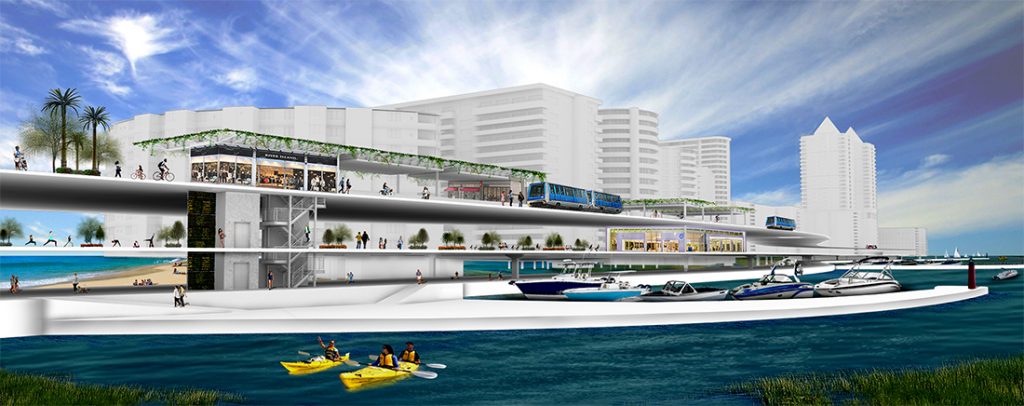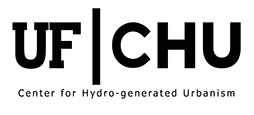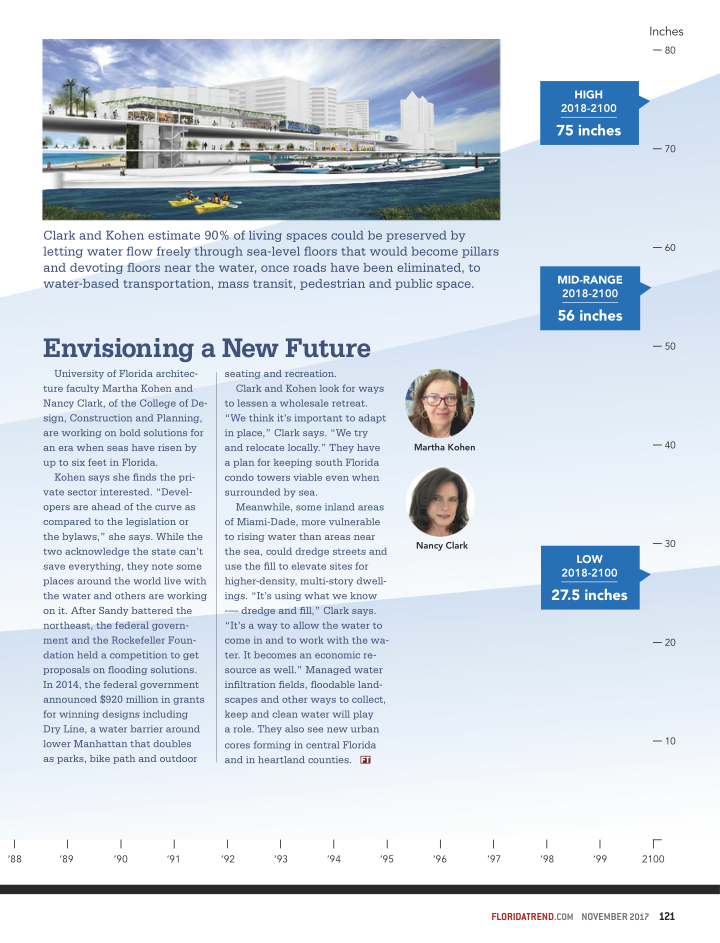Florida Trend Magazine
Envisioning a New Future
The work of CHU was featured in Florida Trend Magazine at the November 2017 issue.
University of Florida architecture faculty Martha Kohen and Nancy Clark, of the College of Design, Construction and Planning, are working on bold solutions for an era when seas have risen by up to six feet in Florida.
Kohen says she finds the private sector interested. “Developers are ahead of the curve as compared to the legislation or the bylaws,” she says. While the two acknowledge the state can’t save everything, they note some places around the world live with the water and others are working on it. After Sandy battered the northeast, the federal government and the Rockefeller Foundation held a competition to get proposals on flooding solutions. In 2014, the federal government announced $920 million in grants for winning designs including Dry Line, a water barrier around lower Manhattan that doubles as parks, bike path and outdoor seating and recreations.
Clark and Kohen look for ways to lessen a wholesale retreat.
“We think it’s important to adapt in place,” Clark says. “We try and relocate locally.” They have a plan for keeping south Florida condo towers viable even when surrounded by sea.
Meanwhile, some inland areas of Miami-Dade, more vulnerable to rising water that areas near the sea, could dredge streets and use the fill to elevate sites for higher-density, multi-story dwellings. “It’s using what we know – dredge and fill,” Clark says. “It’s a way to allow the water to come in and to work with the water. It becomes an economic resource as well.” Managed water infiltration fields, floodable landscapes and other ways to collect, keep and clean water will play a role. They also see new urban cores forming in central Florida and in heartland counties. FT


